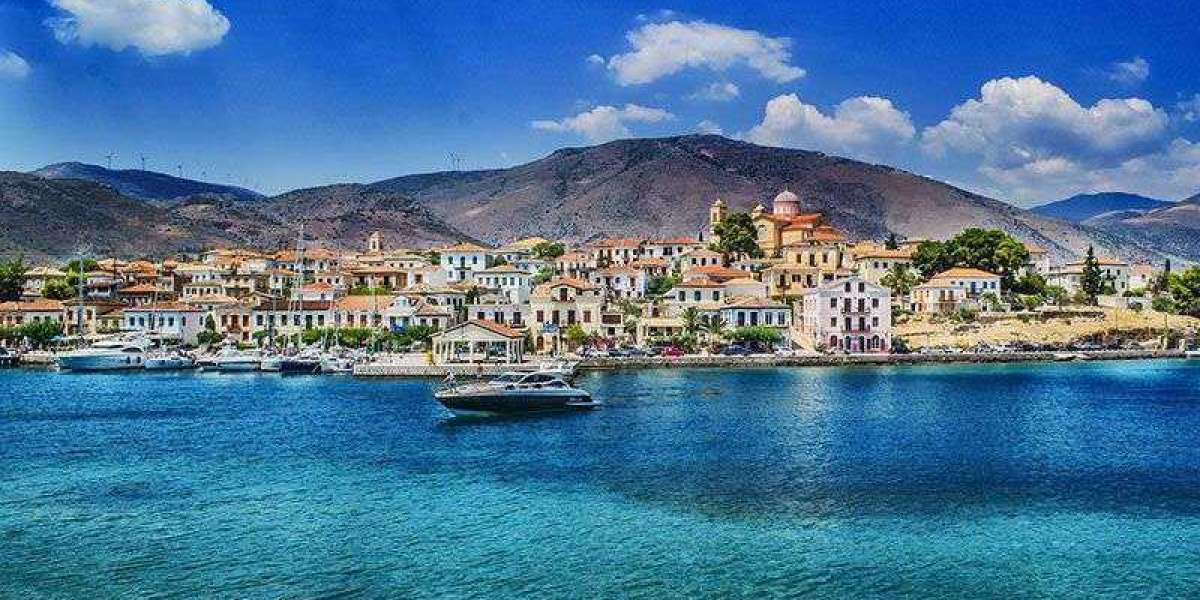Nestled between the Greek and Anatolian peninsulas, the Aegean Sea is a mesmerizing expanse of blue that has captivated hearts and minds for thousands of years. Stretching over 214,000 square kilometers, this part of the Mediterranean Sea has served as a cradle of Western civilization, a center of trade, warfare, mythology, and art. The Aegean Sea's islands, coastlines, and waters have not only played a pivotal role in shaping the history of Europe and the Near East but continue to enchant travelers, historians, and investors alike today.
This comprehensive article delves into the geographical, historical, cultural, ecological, and economic significance of the Aegean Sea, exploring its unique beauty and the enduring legacy it represents. It also examines the modern-day appeal of the region and offers insights into real estate opportunities, such as villas for sale in Greece.
Geography of the Aegean Sea
The Aegean Sea is bounded by Greece to the west and north, Turkey to the east, and the island of Crete to the south. It connects to the Marmara Sea and the Black Sea via the Dardanelles, the Sea of Marmara, and the Bosporus Strait. Numerous islands are scattered throughout the Aegean, the most prominent of which include Crete, Euboea, Rhodes, Lesbos, Chios, Samos, and the Cyclades and Dodecanese island groups.
These islands vary greatly in size and character, some rugged and mountainous, others lush and fertile. The geography is marked by deep bays, high cliffs, sandy beaches, and a seabed that is rich in marine biodiversity. Volcanic activity in the region, most notably the eruption of Santorini, has also played a critical role in shaping the landscape and history.
The Aegean basin is characterized by its complex underwater topography, which includes numerous ridges, trenches, and basins. These underwater features influence ocean currents and marine life, and they also create ideal conditions for underwater archaeology. Some ancient shipwrecks have been discovered at incredible depths, offering new insights into the maritime history of the region.
The islands also feature unique geological structures, such as the limestone caves of Crete, the volcanic caldera of Santorini, and the marble quarries of Paros and Naxos, which supplied material for some of the most famous sculptures and buildings of antiquity. These natural formations contribute not only to the scenic beauty of the region but also to its economic and cultural heritage.
Historical Significance
Prehistoric and Ancient Times
The Aegean Sea region has been inhabited since the Neolithic period. Early civilizations, such as the Minoans on Crete and the Cycladic culture in the central Aegean, flourished around 3000 BCE. These cultures developed sophisticated societies with advanced architecture, seafaring, and trade networks.
The Minoans were among the first great civilizations of Europe, known for their palatial centers, frescoes, and complex societal structures. Their capital at Knossos was a marvel of ancient engineering, complete with plumbing systems and storied myths like that of the Minotaur in the labyrinth. The Cycladic culture, meanwhile, is renowned for its minimalist marble figurines that influenced modern art centuries later.
The Mycenaeans, who followed the Minoans, established powerful city-states on the Greek mainland and engaged in extensive maritime trade across the Aegean. Their legacy is preserved in the Homeric epics, the Iliad and the Odyssey, which describe events centered around the Aegean. These tales are not just literary masterpieces but also reflections of the geopolitical and cultural climate of the Late Bronze Age.
Classical Antiquity
During the classical era, the Aegean Sea became a vital part of the Greek world. City-states such as Athens, Sparta, and Corinth dominated the region. The sea served as a highway for commerce and cultural exchange, facilitating the spread of Hellenic art, philosophy, and political ideas.
Naval battles, such as the Battle of Salamis (480 BCE), played a crucial role in preserving Greek independence from Persian invasions. The Delian League, led by Athens, used its naval power to dominate much of the Aegean, marking the beginning of Athenian imperialism. The Aegean was thus not only a route for peaceful exchange but also for military strategy and dominance.
The islands themselves developed unique cultures. Delos became a major religious center, while Rhodes gained fame for its colossus and military navy. The cultural and architectural achievements of this period continue to inspire the modern world.
Roman and Byzantine Eras
The Roman Empire absorbed the Greek world in the 2nd century BCE, and the Aegean remained a significant maritime zone. Following the division of the Roman Empire, the eastern half became the Byzantine Empire, with Constantinople (modern-day Istanbul) as its capital. The Aegean Sea remained a core region for trade, defense, and religious development during this time.
Christianity spread through the Aegean during the Byzantine period, and many of the islands became important centers of learning and spirituality. Monasteries were built in remote and serene locations, some of which still function today, such as those in Patmos, where the Book of Revelation was written.
Ottoman Period to Modern Times
The fall of Constantinople in 1453 marked the beginning of Ottoman control over the Aegean. This lasted until the 19th and early 20th centuries when modern Greece gained independence. The sea has since been at the center of geopolitical disputes and collaboration between Greece and Turkey.
In modern times, the Aegean continues to be a zone of strategic importance, with ongoing discussions over territorial waters, airspace, and energy exploration. Despite tensions, the region also sees cooperation in tourism, environmental protection, and cultural exchange.
Cultural and Mythological Heritage
The Aegean Sea is steeped in mythology and legend. It is named after King Aegeus of Athens, who, according to myth, leapt into the sea in grief, believing his son Theseus had died in Crete. Countless myths unfold across its waters and shores—from the labors of Hercules and the voyage of the Argonauts to the romantic tragedies of gods and mortals.
Ancient temples, theaters, and archaeological sites dot the Aegean islands, bearing witness to their rich cultural past. The islands of Delos, Santorini (Thera), and Rhodes are UNESCO World Heritage Sites, celebrated for their historical significance and well-preserved remains.
Festivals and traditions rooted in antiquity are still observed today. Pan-Hellenic festivals, like the Naxos music festival and the religious celebrations in Tinos, continue to breathe life into ancient customs. Local folklore, traditional music, and dances also reflect the enduring cultural vibrancy of the region.
Ecology and Marine Biodiversity
The Aegean Sea hosts a diverse ecosystem with over 400 species of fish, dolphins, monk seals, and countless invertebrates. Its underwater habitats include seagrass meadows, coral-like formations, and rocky reefs that are crucial for marine life.
However, the region faces environmental challenges such as overfishing, pollution, and the impact of climate change. Marine protected areas have been established to preserve the delicate balance of its ecosystem. Initiatives by Greece and the EU aim to promote sustainable fishing, reduce plastic waste, and safeguard endangered species like the Mediterranean monk seal.
The islands also have unique terrestrial ecosystems. Endemic plants, rare birds, and migrating species make the region important for biodiversity research. Ecotourism is gaining popularity, with hiking trails, birdwatching tours, and marine excursions offering sustainable ways to experience the Aegean's natural beauty.
Economy and Maritime Importance
The Aegean Sea continues to be a vital economic zone for Greece and Turkey. Tourism, fishing, and shipping dominate the maritime economy. Greek ferries and cruise ships connect the islands with the mainland, supporting local economies and offering travelers access to remote and picturesque locations.
Maritime trade routes crisscross the sea, and ports such as Piraeus, Thessaloniki, and Izmir are hubs of international commerce. Oil and gas exploration in the Aegean's seabed has also been a topic of political debate and international negotiation. Investment in green energy and sustainable port development is also shaping the future of the region.
The fishing industry, while facing pressure from modern challenges, remains essential to the livelihood of many island communities. Traditional methods are being preserved and promoted through local cooperatives and culinary tourism, linking the economic and cultural fabric of the region.
Tourism and Modern Appeal
The Aegean Sea remains one of the world’s top travel destinations. With its sun-drenched beaches, whitewashed villages, vibrant nightlife, and ancient ruins, the Aegean islands attract millions of visitors each year. Islands such as Mykonos, Santorini, and Paros are renowned for their beauty, while others like Naxos and Ikaria offer more serene, less commercialized experiences.
Water sports, sailing, cultural festivals, and culinary tourism all contribute to the vibrant tourism industry. The Aegean’s natural beauty and historical depth offer something for every type of traveler. Food lovers can savor local specialties like moussaka, fresh seafood, and olive oil-based dishes. Wine tourism is also thriving, with indigenous grape varieties and ancient winemaking techniques drawing enthusiasts from around the globe.
The region is increasingly appealing to digital nomads and retirees, with its relaxed pace of life, welcoming communities, and inspiring surroundings. In response, local governments are improving digital infrastructure and offering incentives for long-term stays.
Villas for Sale in Greece: A Paradise Investment
As demand for Mediterranean real estate continues to grow, villas for sale in Greece—especially those near the Aegean Sea—have become a hotspot for investors and lifestyle seekers. Whether you're looking for a luxurious cliffside home in Santorini, a traditional stone villa in Paros, or a modern retreat on the mainland overlooking the sea, the market offers diverse options.
These properties not only serve as ideal holiday homes but also present strong rental potential during the high tourist season. With favorable property laws for foreigners and a relatively low cost of living, investing in a villa in Greece combines lifestyle appeal with economic opportunity. The timeless allure of the Aegean Sea makes owning property here not just an investment in real estate but in quality of life.
In recent years, Greece has introduced golden visa programs and tax incentives for expatriates, further boosting interest in property investments. Many villas come with eco-friendly features, private pools, and panoramic views of the Aegean, making them not only luxurious but sustainable.
Conclusion
The Aegean Sea is more than just a body of water—it is a symbol of continuity, resilience, and timeless beauty. From its ancient roots to its modern-day charm, the Aegean has remained a cultural and economic cornerstone of the Mediterranean world. Its scenic landscapes, deep history, and vibrant present make it a place of endless fascination and opportunity.
Whether you're exploring its myths, diving into its waters, tasting its flavors, or considering a future among its idyllic shores, the Aegean Sea invites you to become part of its living legacy. Its appeal is not only in its past or its present but in the enduring promise of inspiration, discovery, and renewal that it offers to all who encounter it.








